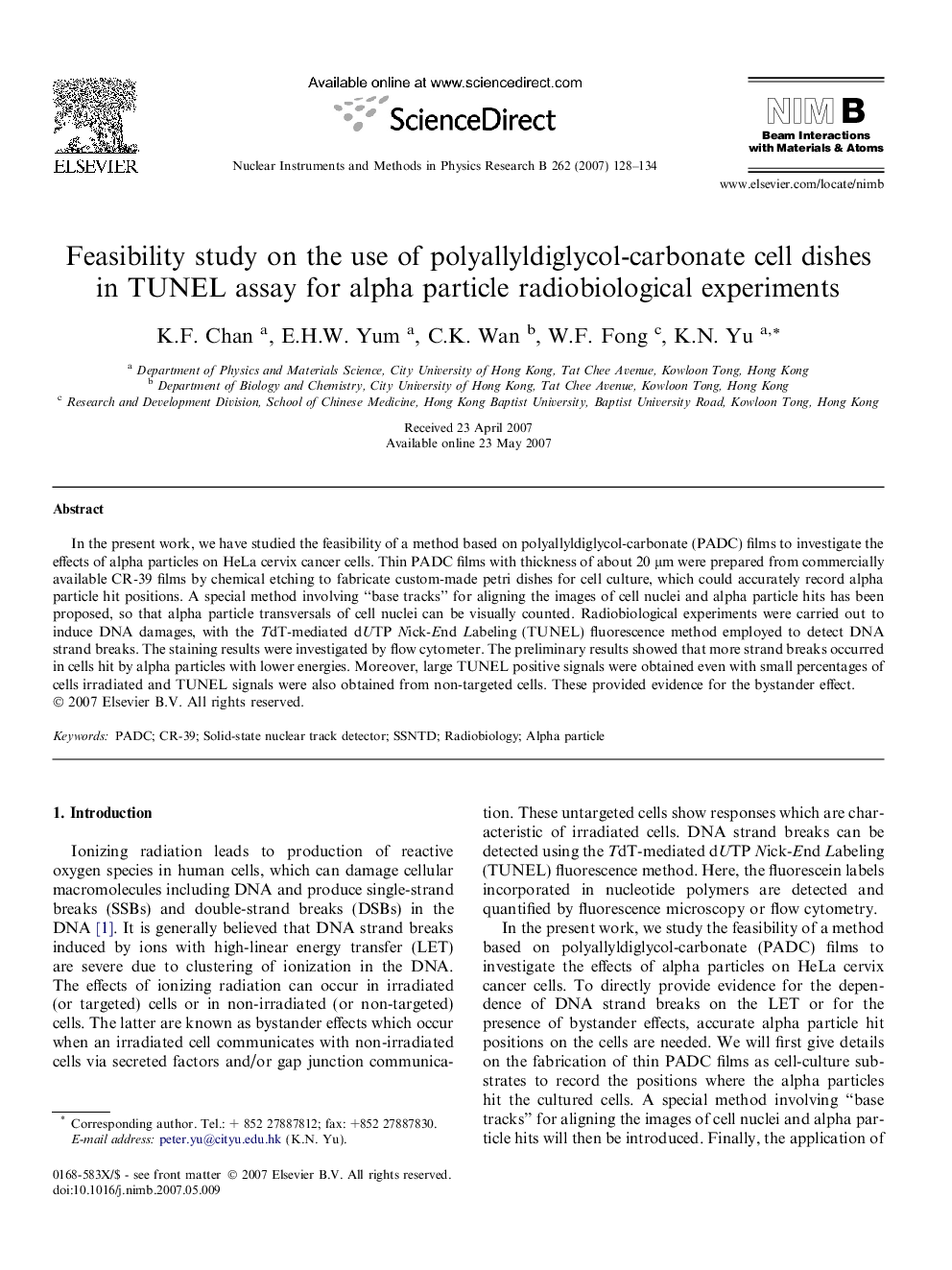| کد مقاله | کد نشریه | سال انتشار | مقاله انگلیسی | نسخه تمام متن |
|---|---|---|---|---|
| 1686664 | 1010608 | 2007 | 7 صفحه PDF | دانلود رایگان |

In the present work, we have studied the feasibility of a method based on polyallyldiglycol-carbonate (PADC) films to investigate the effects of alpha particles on HeLa cervix cancer cells. Thin PADC films with thickness of about 20 μm were prepared from commercially available CR-39 films by chemical etching to fabricate custom-made petri dishes for cell culture, which could accurately record alpha particle hit positions. A special method involving “base tracks” for aligning the images of cell nuclei and alpha particle hits has been proposed, so that alpha particle transversals of cell nuclei can be visually counted. Radiobiological experiments were carried out to induce DNA damages, with the TdT-mediated dUTP Nick-End Labeling (TUNEL) fluorescence method employed to detect DNA strand breaks. The staining results were investigated by flow cytometer. The preliminary results showed that more strand breaks occurred in cells hit by alpha particles with lower energies. Moreover, large TUNEL positive signals were obtained even with small percentages of cells irradiated and TUNEL signals were also obtained from non-targeted cells. These provided evidence for the bystander effect.
Journal: Nuclear Instruments and Methods in Physics Research Section B: Beam Interactions with Materials and Atoms - Volume 262, Issue 1, August 2007, Pages 128–134